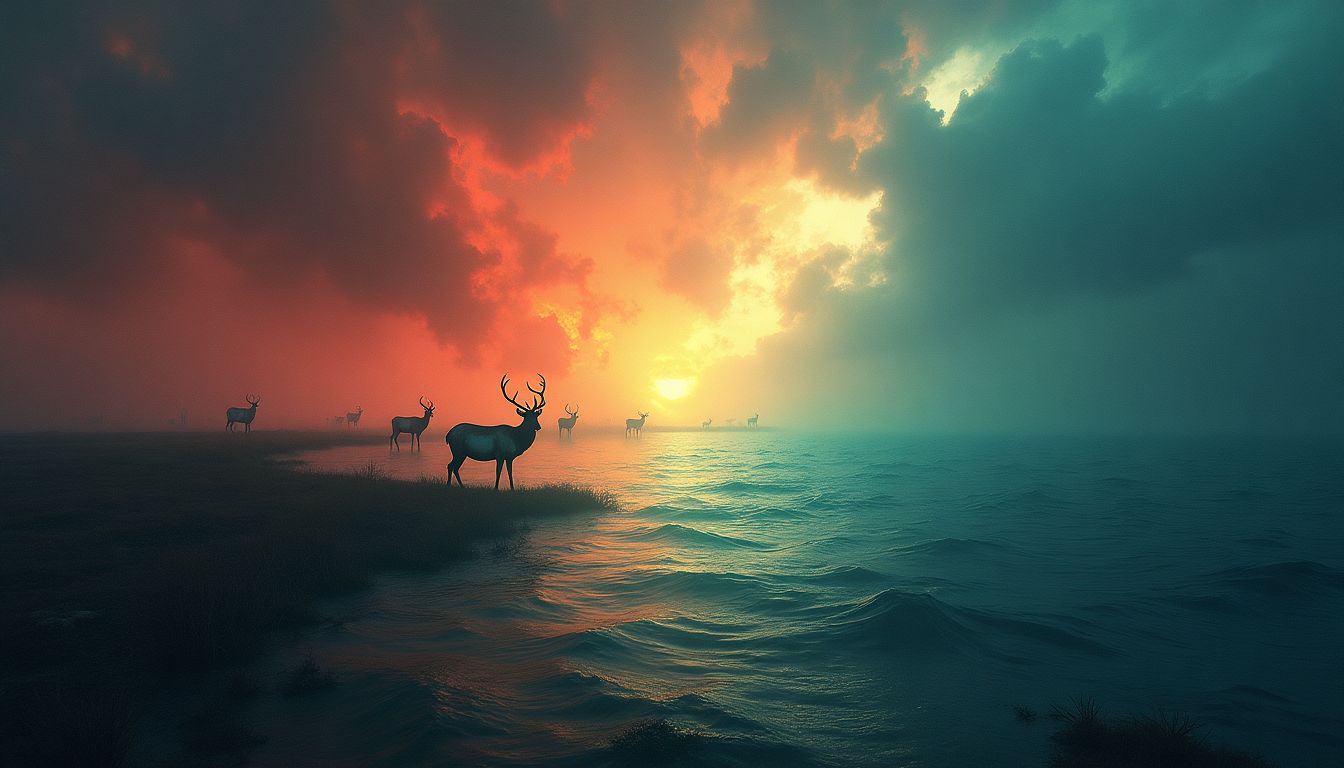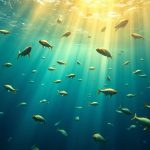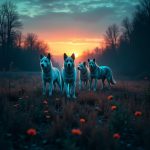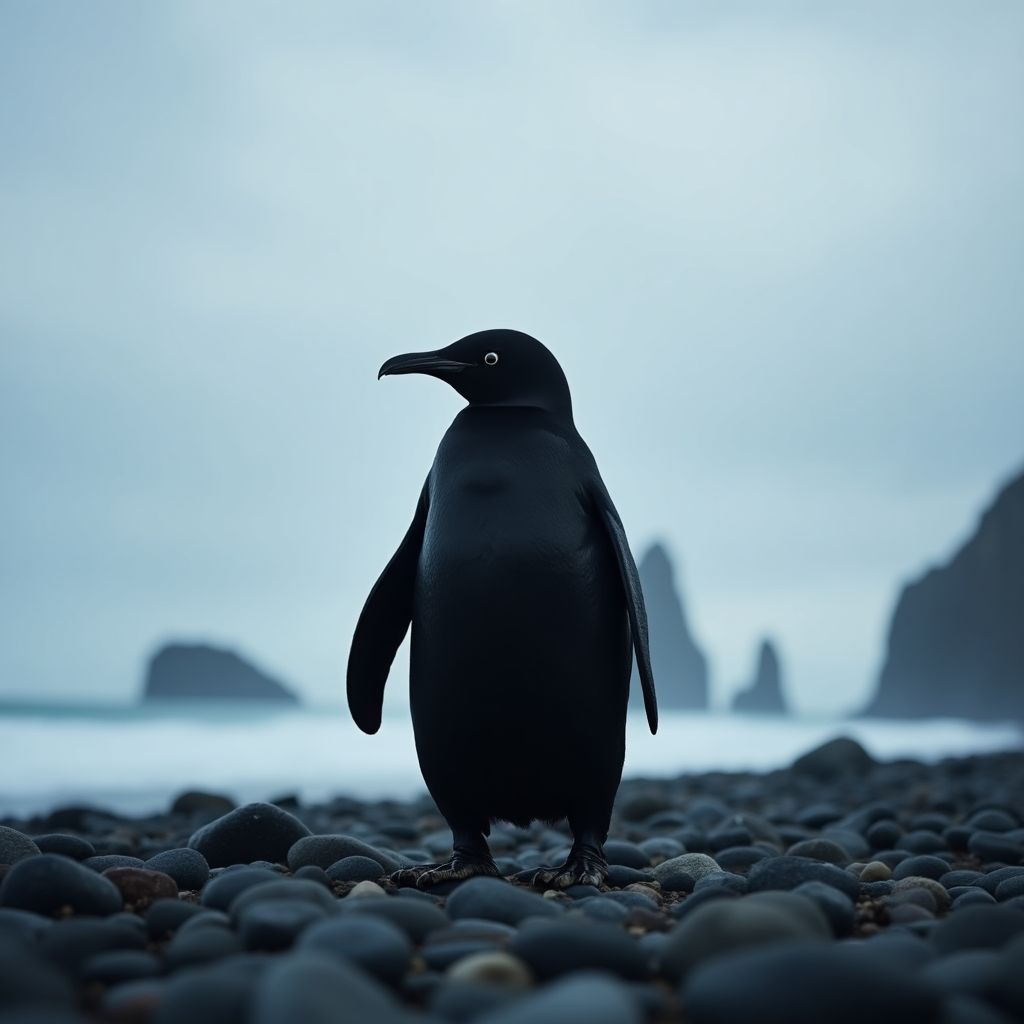Imagine awakening one morning to find 120,000 peculiar, prehistoric-looking creatures mysteriously lifeless across the vast, chilly steppes of Central Asia. These aren't just any animals; they're Saiga antelopes, a unique and striking species with oddly floppy snouts and large soulful eyes. This eerie event, tragically marking approximately half of their global population, has left scientists and environmentalists puzzled and alarmed.
The sudden mystery unfolding in the steppes doesn't just echo the haunting echo of extinction; it raises the sirens of an ecological emergency. Picture it: Tens of thousands of dolphins washing ashore or a mass avian die-off, and you're beginning to grasp the scope of tragedy unfolding here. If you think about it, it's like losing a massive chunk of history in the blink of an eye. Our world certainly feels less alive when ancient creatures like these tumble toward oblivion.
The strange and elusive nature of the Saiga, a species with some of the Earth's most primitive genetics left over from the last ice age, presents us with a poignant reminder of our planet's incredible fragility. Our focus today is not just on the mere survival of an ancient subarray of animals, but the delicate dance of ecosystems finding balance on the edge of a knife. Let's unravel this mystery together, hand-in-hand with the creators of this mesmerizing video from SciShow.
Mysterious Deaths of the Saiga Antelope
It all started on May 10th of last year. On the cold Asian steps, where the lazy stretches of grass and open sky make way for grazing herds, something insidious lingered. During what should have been a life-afirming season of birth, death crept in silently among expectant Saiga mothers and their young. Symptoms like foaming at the mouth, diarrhea, and a struggle to breathe mirrored scenes straight out of a horror movie. Consequently, the Saiga population started plummeting overnight, with death tolls soaring to incomprehensible numbers.
The bleak playbook of this mystery unraveled to reveal an ecological whodunnit. By May's end, the Kazakh government turned to the United Nations for aid, inviting British biologists under the UN's Convention on Migratory Species to dive into this enigma. But even their combined expertise struggled to pinpoint the perpetrator behind the Saiga's deadly fate. Was it inclement weather, toxic flora, or the dark shadow of industrial activity like rocket fuel leaks? Nothing could be ruled out, and yet nothing held all the answers.
Scientific Theories: A Likely Culprit on Trial
One potential suspect began to materialize—a malicious actor often whispered about in the tragic tales of cattle, buffalo, and bison: Hemorrhagic septicemia. This wicked blow to circulatory health marked itself as the most probable cause, invading thousands within mere hours, boasting a ghastly mortality rate of 100%. The bacterium, Pasteurella, responsible for this infamy, often lay inconspicuous in healthy hosts, lurking the herd's unassuming breaths.
So why did the Saiga succumb so violently to what ordinarily remains dormant? Bio-sleuths propose a secondary, cryptic influence weakening their immunity—be it climate, viral harbingers, or unforeseen shifts forcing the hand of nature into disaster.
Sawfish's Virgin Births: The Blessing and Curse of Parthenogenesis
Meanwhile, on the other end of our globe, amid Florida's tranquil waters, an intriguing beacon of resilience emerges. The endangered smalltooth sawfish have delighted scientists with revelations of an alternative dance of life—self-reproduction, or parthenogenesis. Imagine the sheer audacity of nature: Sawfish gave birth without ever having known the embrace of a mate, a real “mother of invention” scenario.
Biologists, while probing the DNA of these mythical creatures, unveiled a 3% population segment mirroring a curious half-clone of their maternal ancestors. These aquatic progenitors relied on an intuitive process, albeit less traditional, of progenitor cells compensating for the absence of paternal input. It’s like having a photocopy machine that creates near-perfect imprints, yet the ink fades the original form.
But this bold feat of nature isn’t without its intricate warnings. This parthenogenetic wave hints at a despairing environmental tune composed of dwindling numbers and ravaged habitats due to overfishing and environmental change. It’s the kind of choice nobody wants but may be better than extinction. With survival at its core, mother nature once again tells a tale of beauty and desperation.
The Bigger Picture: A Shared Story of Survival
The world is a stage, life its ever-evolving script. The Saiga antelope’s tragic mystery and the triumphant yet disheartening story of sawfish parthenogenesis reflect a grand, interconnected ballet. The rivers of Central Asia spill vibrant ancient life, while the humble sawfish write their legacy in solitary currents. Our existence dances on the brink, playing out the steely drama of resilience and impermanence.
These stories remind us of our duty to tune into the whispers of endangered ecosystems, striving to piece together solutions for balancing the precarious scales of life. We walk the cusp of wonder and woe, faced with survival strategies born of necessity, painting a poignant picture of modern-day conservation challenges.
Call to Action
Let us join this narrative with passionate advocacy. Engage with these stories, understanding what could be at risk if our preservational anthem goes unheard. Now, imagine—what steps are we ready to take to harmonize human progress with the wild, untamed beauty of our planet?
We invite you to share your thoughts on the mysteries and marvels of our world. How do you perceive nature’s ability to survive against the odds? Could these moments of resilience inspire us to rethink conservation efforts for other species at risk? Join the discussion in the comments and become a part of the iNthacity community—a "Shining City on the Web"—where dialogues open paths to innovation and awareness. Join us today in shaping a future where wonders of our planet thrive alongside human stories.
Disclaimer: This article may contain affiliate links. If you click on these links and make a purchase, we may receive a commission at no additional cost to you. Our recommendations and reviews are always independent and objective, aiming to provide you with the best information and resources.
Get Exclusive Stories, Photos, Art & Offers - Subscribe Today!

























Post Comment
You must be logged in to post a comment.